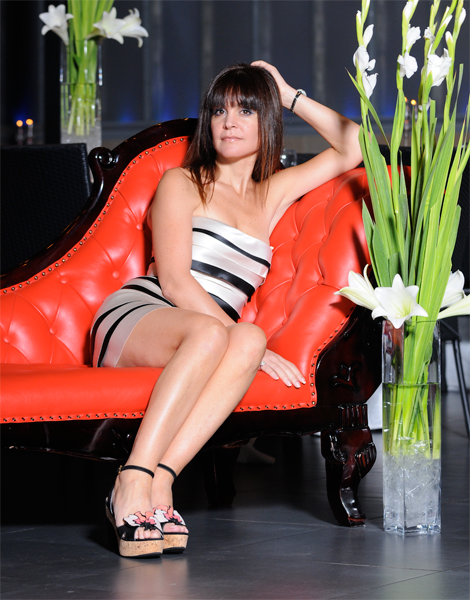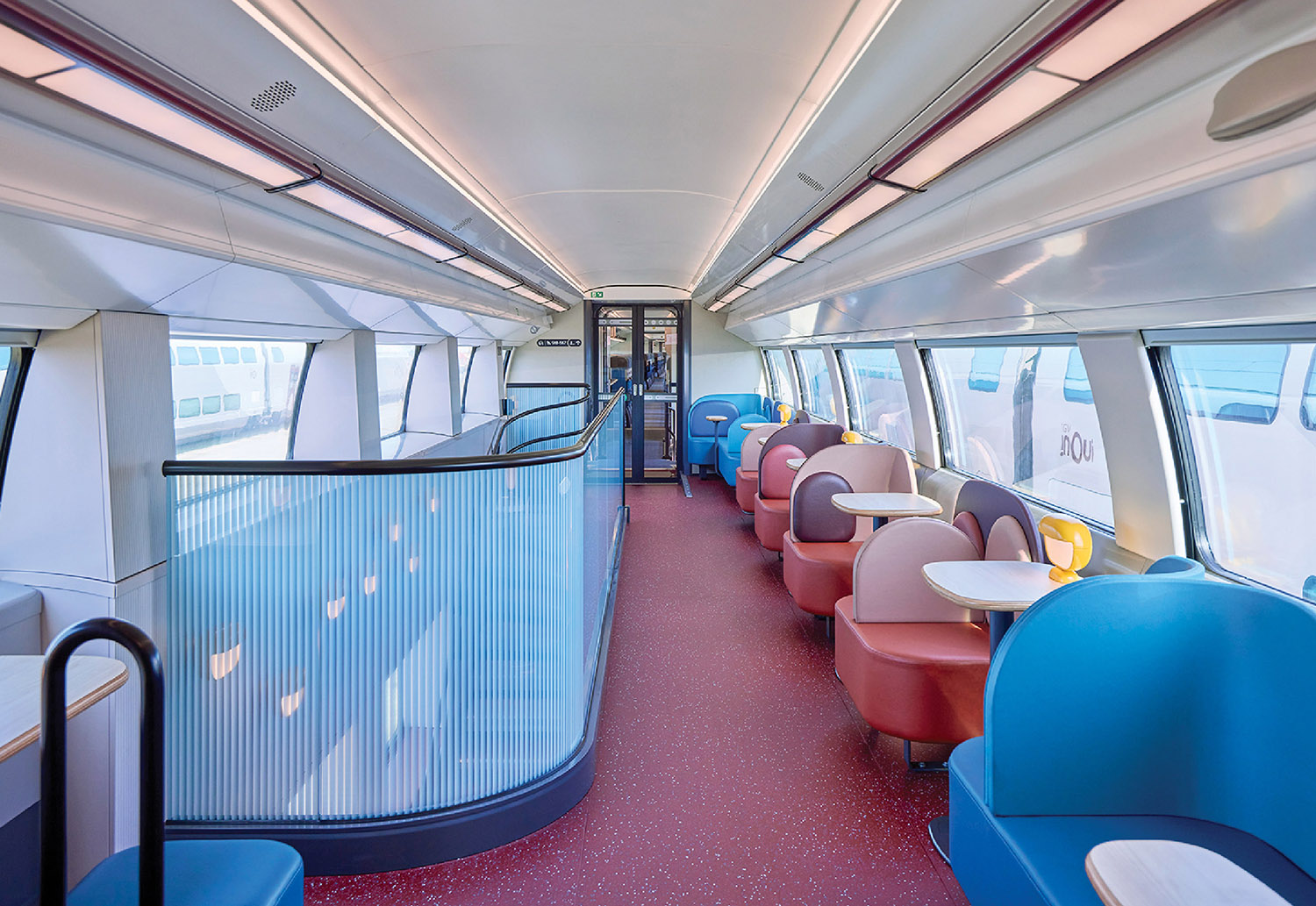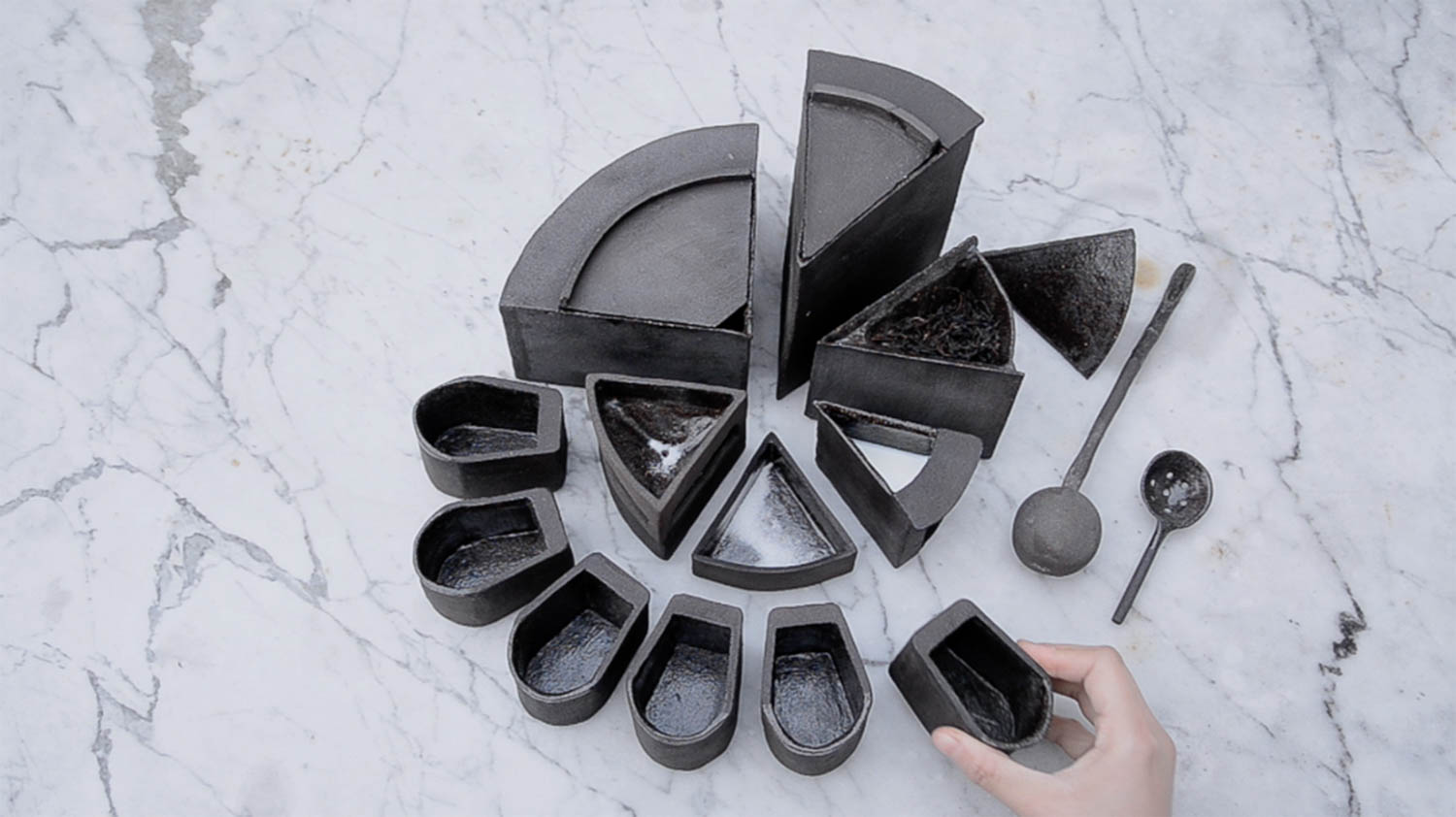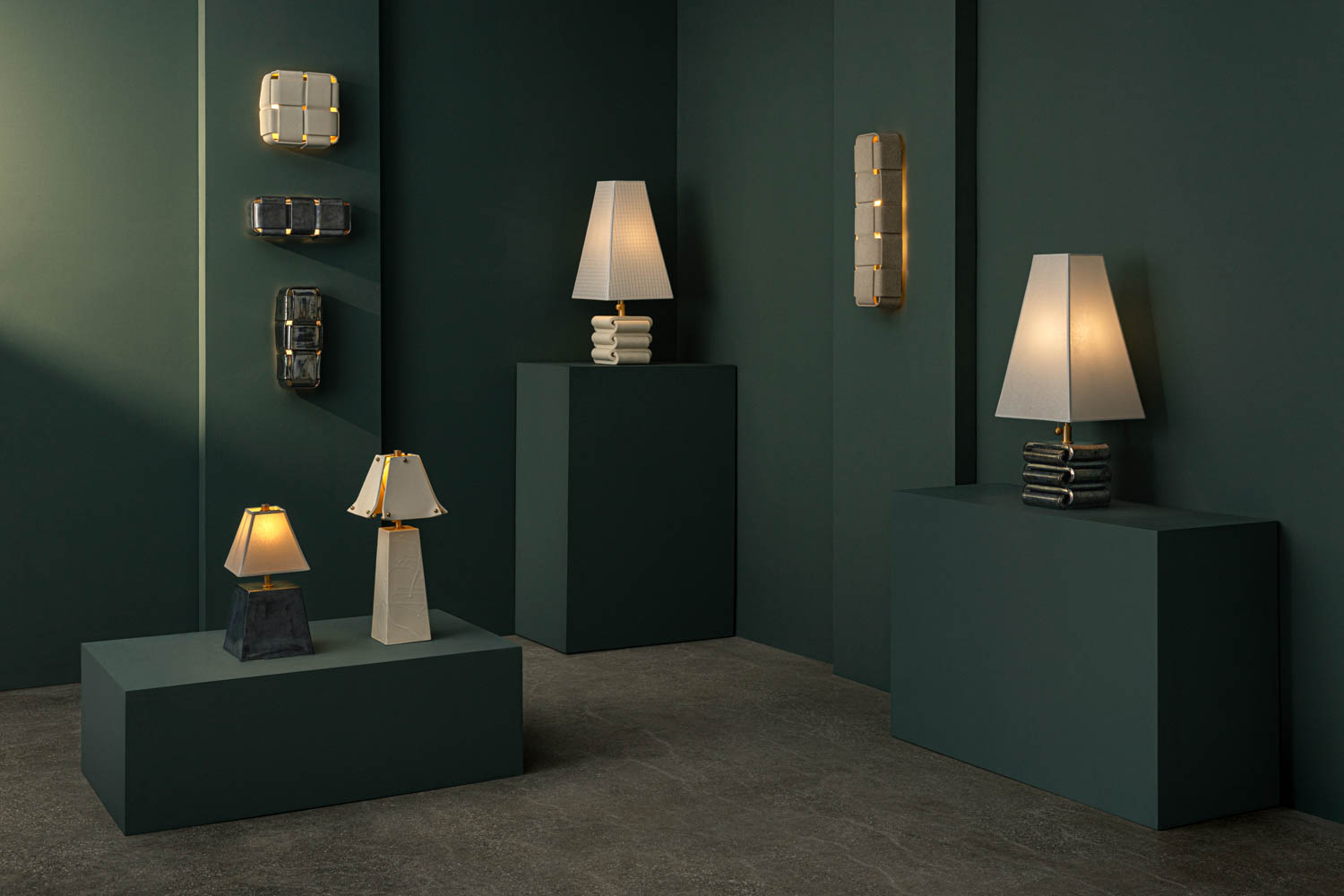10 Questions With… Sigal Sasson
Fort Lauderdale-based Sigal Sasson, the dynamic artist behind
Rug Art International
’s bold and sought-after custom rugs, enjoys a beautiful collaboration with her business partner and husband, Vidal. With the help of passionate artisans and brand representatives, the couple creates inspiring fine art rug collections—hand-knotted, hair-on-hide, hand-tufted, or flat-weave—that are enthusiastically received, season after season. From Fendi boutiques to the Mandarin Oriental hotel at New York’s Time Warner Center, Morocco-born Sigal’s artistry is on grand display throughout the world. Here, we speak with Sasson about her passion, artistry, and synergistic relationship with husband, Vidal.

Interior Design: Where do you tend to do your creative work?
Sigal Sasson: I have an office here at my house in Fort Lauderdale—a studio where I keep all my colors, where the music is always on—though I find myself working everywhere in my house. As soon as my daughter is off to school at 7 AM, I’m dressed and ready for the day. I work all the time but I don’t see it as work. Sketching, writing, reading—I’m always doing something.
ID: What’s your creative perspective as an artist?
SS: At the end of the day, it’s all got to be personal. What do you want to see tomorrow morning when you open your eyes? I love bold, large patterns, and am very much affected by light. I take a lot of pictures of what I paint as well as all sorts of things that catch my eye… even what I cook. Currently I’m taking cues from architecture and working on bold, modern design motifs—things that don’t have to say a lot yet are very striking. My philosophy, I guess, is that life is too short to go small.
ID: Are there specific locales from which you take inspiration?
SS: I recently created a rug called Deco Drive, inspired by the reflective surfaces of Rodeo Drive. I have always loved big cities and modern buildings, yet I’m a woman of many moods. I can like modern, but can also go to Turkey or Morocco in my mind—all the restaurants and mosques that are just amazing to look at. At a rug designer, I take what I see before me and imagine what it would look like underfoot. Looking up it’s impressive, but what if I take it and apply it on a floor?
ID: What is the collaborative process like with your staff, and how would you characterize the individuals who drive your company?
SS: I love to work with our employees and to have an openminded exchange of ideas. My staff helps me remember that what’s best for a project isn’t necessarily what I like. Rather, it’s what our clients like. We run a very artistic business, and that’s what the company stands for—making room for all of these perspectives. It’s a joy to be in the midst of a company in which the employees have a shared appreciation for art. My husband, Vidal, comes with many ideas and I find it fascinating to combine what we do. Interacting with our showrooms is always an inspiring experience, too. It’s in that exchange that we learn what we can add or combine or improve. This is the company I want to run in the future, and continue to share my ideas with likeminded people.
ID: How do you thread your artistic perspective into this lucrative commercial business?
SS: The key is to be open-minded, with the emotions exposed—not to simply put something on paper and call it art. I’m a very emotional artist. It’s about emotion, or it won’t touch you. Art never ends—it is mind-blowing, jaw-dropping. We can’t do something static. Our work has to contribute to making a better space. I know that what we do affects those who live with our pieces.
ID: Are clients more particular now that they have a greater frame of design reference in the digital age?
SS: I love that my clients have more information. That makes our job easier and smoother. They know what they want, making it easier to collaborate together. They say, “Hey, I love this image.” “I was moved by this rug.” “I’ve been to this place.” It’s their product, so we want them to be happy and satisfied.
ID: You do lots of work in the hospitality sector. What are the essentials of working within the high-end hospitality world today?
SS: Hospitality work is a very long process, with very important considerations. Safety is key, first of all—be it a hotel, hospital, bank, or any high-traffic area. Thickness and fiber are key considerations. With such projects, there are also going to be a lot of people involved, which makes it fascinating. Sometimes things work, sometimes they don’t. For some reason the patterns always tend to go bigger. From my point of view, I take into consideration the angles of a design. How are people going to see something from far away? The more we work with hospitality, the more important it is to consider distance. We actually had a client who gave us a number of how many footsteps a carpet would take a day. These rugs have to be incredibly durable. There are so many things to consider, so it’s a big puzzle.
ID: How does your company take into consideration the evolving science of rug fabrications?
SS: I love to use the fibers we’ve always used, and integrate new fibers and textures. What today’s technology has done is make things move much faster. I’m not too crazy about “rest,” and always feel the need to create, so working with fibers and colors is endlessly stimulating for me.
ID: What are some of the newest happenings on the business side of Rug Art International?
SS: Right now, we’re creating some new, absolutely incredible rugs with new fibers, going back and forth with samples. We have representatives in LA, Del Mar, and Singapore, and have more coming in and, meanwhile, we’re working on enlarging our New York showroom and getting that floor plan in place. It’s a very creative process, creating this larger showroom. There has been a lot of collaboration between my husband and the showroom.
ID: And how is that, having a workplace dynamic with your husband?
SS: [Laughing] It’s not always a walk in the park. However, he’s an amazing businessman, and I learn a lot from him. He does what he does best, I do what I do best, and we don’t always agree. Yet it always works out. Sometimes we have to sit and face each other and ask ourselves, “What’s good for the company?” Most of the time, it’s virtually flawless. What’s great is, we have a lot of laughs, have lunch together, take breaks. When you work with your partner, have to have a different perspective—one in which you get along and still manage to reach your goals.
ID: You are very involved with philanthropy, volunteer your time, and and have allied yourself with
GoodWeave
, an organization dedicated to ending child labor. How did this synergy come about?
SS: I’m very happy to be a part of GoodWeave. Before we became business partners, my husband and I agreed that we should do something with this issue. God has blessed us with so many good things, and we need to give back. On a visit to Nepal, there was a girl who wanted to go home with my husband, and the message was driven home that these kids need so much. It’s something we do from the heart. I always say to my children, “I want to take you to India, Nepal, Pakistan, and you will see how many blessings you have.” It’s for similar reasons that I volunteer to teach art, to help kids feed their souls. My mother always told me that no matter who you are, rich or poor, you can always give something. It’s a privilege.


